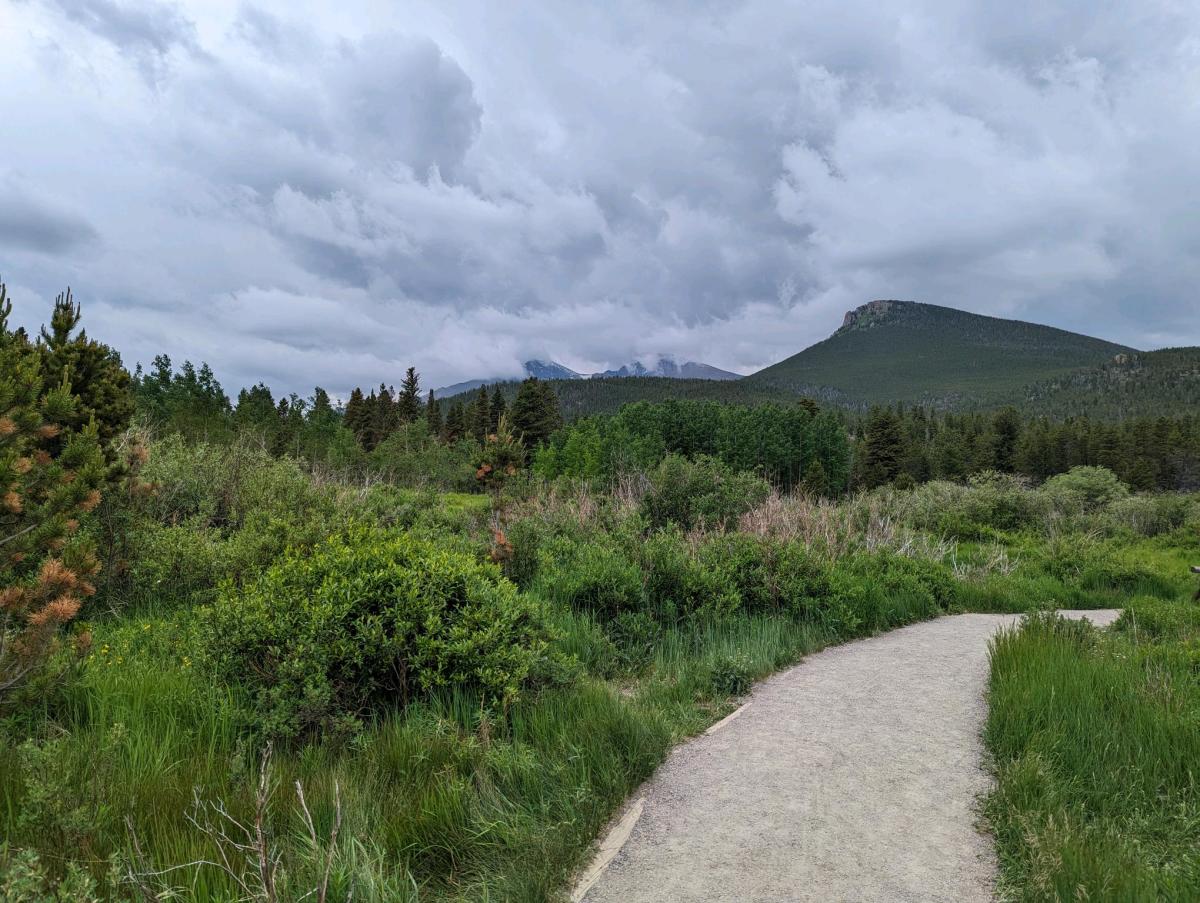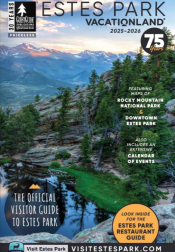Afternoon thunderstorms are typical in the Colorado Mountains. Here’s how to make sure you’re prepared.
Hiking is a summertime bucket list item for many of us, especially in stunning Rocky Mountain National Park. The bluebird skies, fresh air, expansive views and potential wildlife sightings make our hearts sing. What you may not know is that there is often a chance of afternoon thunderstorms in the summer, which have the potential to disrupt an otherwise perfect hike. Or, if you’re unprepared, turn it into a dangerous situation.
We connected with our friends at Rocky Mountain National Park to find out how to prepare for or react to potential thunderstorms when hiking in the Rocky Mountains. Use the information below to prepare for your hikes this summer.
It’s not always as warm or dry on the trails as it is in town. What should people wear to hike in the mountains in the summer?
Hikers need to be prepared for changing weather any time of year! Conditions can change rapidly in the mountains, especially as you go up in elevation. While it can be warm and sunny in June, July, August and September at 7,000 ft, rain and sleet or snow are possible on trails above 9,000 ft.
Wear or pack layers of wicking clothing, including a windproof and waterproof jacket and extra socks. It can be miserable to get wet and cold at higher elevations without the proper clothing. Hypothermia is possible any time of year.

What should hikers have in their daypacks in case they encounter a storm?
Warm layers and waterproof clothing. But anytime you hike carry the 10 essentials, including waterproof clothing. The other nine items are a map and compass (and know how to use them), flashlight or headlamp, layers of wicking clothing, hat, sunscreen, adequate water and food. A map app on a smartphone or a GPS can be helpful but do not rely on technology alone. Cell signals are not reliable in the mountains, and batteries can get cold and die more quickly.
What can hikers watch out for while on the trail if rain is in the forecast?
Pay attention to the weather and look at the sky. Storms often are forecast in the afternoons. There are times when you will encounter thunderstorms in the mountains that were not forecast. Are dark clouds rolling in? Do you hear the roar of thunder, or can you see flashes of lightning? Move to lower elevations and seek shelter if possible. Pay attention to your surroundings and know the safer places to be during lightning and the riskier places to be. Avoid open and exposed areas or areas at the base of tall trees or near bodies of water. If traveling in a large group, spread out and seek shelter at the base of a cluster of lower-elevation trees. There is no fully safe place from lightning when outside.

What are your recommendations to avoid getting stuck in a thunderstorm?
Start early. Pay attention to the weather forecast specifically for your destination. Time your activities based on the weather and/or the forecast. If a thunderstorm is forecast, get off of exposed terrain before noon (this is often when a storm hits, although it can be earlier). When hiking, be prepared to turn back, especially if above treeline, when or if a storm occurs. Don't have summit fever. Avoid peaks, ridges and higher ground during thunderstorms.
What should hikers do if they find themselves stuck in a thunderstorm? Are there any specific areas of the park that hikers should avoid if a thunderstorm is in the forecast?
If possible, try to travel down in elevation and get below treeline. Avoid caves or rock shelters. This may seem like a good place to wait out a storm, but lightning can travel through rock and strike anything inside. Additional tips and information can be found at: Lightning Safety - Rocky Mountain National Park (U.S. National Park Service) (nps.gov).

Is there any final advice about summer storms and hiking in Rocky Mountain National Park?
They can move in fast and can be deadly if you are not prepared.
Where is the best place to get accurate Rocky Mountain National Park weather forecasts?
For weather information for RMNP, visit https://www.weather.gov/bou/rmnp.





